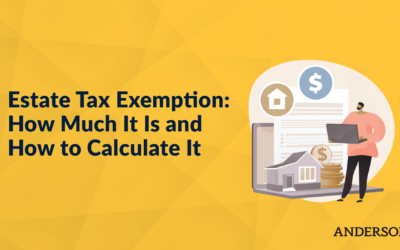
An estate plan is a valuable collection of documents that outlines your wishes, ensures your beneficiaries have access to your accounts, and designates a person to make important financial and health care decisions on your behalf. A will is an excellent start to estate planning, but more is needed to protect your assets and ensure your beneficiaries understand your last wishes. This guide covers the essential elements of an effective estate plan.
Key Takeaways
- An estate plan is a legal collection of documents that outlines and designates your assets and personal belongings.
- It’s never too early or too late to create an estate plan, and you don’t have to be wealthy to benefit from one.
- Drafting a will is a wise place to start with estate planning, but move beyond the will to fully express your wishes to your beneficiaries.
- Estate planning typically includes designating an executor, beneficiaries, financial and health care power of attorneys, and guardian.
What Is an Estate Plan?
An estate plan is a legal collection of documents that directs the allocation of your assets to your beneficiaries. While many perceive an estate plan as a last will and testament, an effective one includes additional essential documents. A living will provides basic instructions on who should receive your assets. Still, it may lack information about who should care for dependents, how beneficiaries can access your assets, or who should make financial or health care decisions on your behalf.
Tax & Asset Protection Workshop
Learn about Real Estate & Asset Protection at our next
FREE LIVE STREAM
When Should You Create an Estate Plan?
It’s never too early or too late to create an estate plan. Creating an estate plan can occur at any age. Taking an “the earlier, the better” approach ensures your assets and dependents receive proper care based on your desires.
A common misconception is that only wealthy individuals need an estate plan. Many people can benefit from an estate plan because it instructs others on how to divide their assets, who should care for dependent children, who should take ownership of any real estate, and what happens to bank or retirement accounts.
If you die without a living will or estate plan, your assets will likely go through probate court. Here, the court decides who gets ownership of assets and accounts, which may not always align with what you want.
Essential Elements of an Effective Estate Plan
An effective estate plan should include detailed directions that cover your health care, financial, and guardianship wishes. An effective estate plan features the following elements:
Last Will and Testament
The last will and testament is an essential part of your estate plan. This legal document outlines where your assets should go, who will care for your dependent children, and what happens to your personal belongings.
We suggest carefully listing all personal assets of value and where each item should go. These assets include real estate, vehicles, bank accounts, jewelry, antiques, investment accounts, or any other items of value. We also recommend defining an executor responsible for ensuring your last will and testament are followed upon your death. This person should be at least 18, mentally capable, and financially responsible.
Revocable Living Trust
Some individuals use a revocable living trust instead of a last will and testament. This legal document instructs beneficiaries of your wishes. One significant distinction of a revocable living trust is that you can transfer ownership of your assets to your named beneficiaries while still living. You also have a right to revoke the living trust. After your death, the revocable living trust becomes irrevocable to fulfill your last wishes.
It’s important to note that if your estate plan includes both a living will and testament and a revocable living trust, it should be consistent. Make sure you assign the same beneficiary to assets to avoid disputes that could lead to lengthy and expensive court proceedings.
Some investors use a revocable living trust to protect their assets while living because it shields their identity. This approach allows you to avoid frivolous lawsuits and protect your other assets, primarily when investing in real estate. Additionally, a revocable living trust may allow your heirs to avoid probate. The probate process can be expensive and timely, often cutting into the assets your beneficiaries receive.
Beneficiary Designations
Your beneficiaries are the individuals who will receive control or ownership of your assets. A beneficiary designation oversees the activation of your estate, ensuring that all named beneficiaries receive assets as designated by you. The local court may determine your beneficiary destination if you don’t.
Include all non-probate assets when making beneficiary designations, including retirement accounts, life insurance policies, annuities, and pension plans. It’s also essential to designate who gets what and at what percentage of ownership each beneficiary receives. Provide clear directions that explain when each beneficiary should receive an asset.
Letter of Instruction
A letter of instruction or letter of intent provides additional details to your beneficiaries. This document allows you to explain why you left certain assets to specific beneficiaries. It also allows you to give beneficiaries further instructions. It’s important to note that a letter of intent may not be a legal document, but it can provide further insight into your estate plan.
Some planners may also use the letter of instruction to detail their funeral wishes. This document is an effective place to include information on life insurance policies or your wishes upon death. You could also use the letter of instruction to include detailed information on accessing assets, bank accounts, loans, or retirement accounts.
Guardianship Designation
Some last wills and trusts may include a clause on guardianship designation, but not all documents do. Make sure any dependents are appropriately taken care of by designating guardianship. We recommend appointing a backup guardian if your initial choice isn’t available. You must name a guardianship designation in your estate plan to avoid the state choosing any family member or, if none are available, putting your dependents in state custody.
Financial Power of Attorney
A financial power of attorney is a person you designate to handle your financial needs. This person will pay your bills, sell assets as needed, or oversee your owned investments. Assigning a person as your financial power of attorney lets the individual control your real estate assets and make financial transactions that may benefit your estate.
Advance Health Care Directive
A health care power of attorney allows another person to make health care decisions for you if you cannot do so. Before signing and filing this document, however, we recommend discussing your beliefs and wishes beforehand. It can also be helpful to designate a second health care power of attorney if your first choice cannot make decisions when needed. You may also include specific health care directions to guide your advanced health care directive on how you want to proceed.
Important Documents
Keeping a list of copies of important documents with your estate plan may be helpful to your beneficiaries. Key documents include bank account locations and log-ins, access to life insurance policies, real estate or property deeds, automotive titles, retirement accounts, credit card accounts, and birth certificates.
Including personal identification cards in your estate plan can also be helpful. Think about items such as your driver’s license, Social Security card, birth certificate, marriage or divorce certificates, and any prenuptial agreements. Remember to include any documents or filings your beneficiaries or tax advisor may need to file taxes on your behalf. Ensuring proper tax filings, even upon death, frees your beneficiaries from tax liabilities.
Digital Instructions
Including digital instructions in your estate plan can also be helpful. Log-in account names and passwords and access information to digital accounts can help your beneficiaries track down important information they may need. Include information on social media accounts or streaming services that your beneficiaries may want to close or cancel.
A thorough estate plan is best for expressing your wishes to the local courts and your beneficiaries. The more detailed information and instruction you provide, the more guidance your beneficiaries will have to understand your directions and fulfill your desires.

Where To Store Your Estate Plan
Once you compile and draft the necessary documents for your estate plan, you’ll want to store them safely. You may keep your estate plan in a fireproof and flood-proof safe in the home. You could also place these items in a safe-deposit box at a local bank. Some may prefer safely keeping their estate plan with their tax or estate planning advisor. Whichever storage method you choose, ensure your beneficiaries know how to access your plan.
Create Your Estate Plan Today With Anderson Advisors
It’s never too early to create an estate plan to protect your assets and beneficiaries. Some tools used in estate planning can also offer you financial benefits now, including creating a revocable living trust. Protecting your assets while you’re alive and following your death is essential to building wealth. We encourage you to sign up for one of our estate planning workshops or schedule a virtual appointment with an advisor who can help you take the first step toward creating an estate plan.
Free Strategy Session with an Anderson Advisor
Receive a detailed risk assessment to assist in lowering problem areas that could wipe out all of your assets with one wrong move. Speak with an Anderson Professional Advisor to get your FREE Strategy Session. Limited-Time Offer: FREE (a $750 value.)














